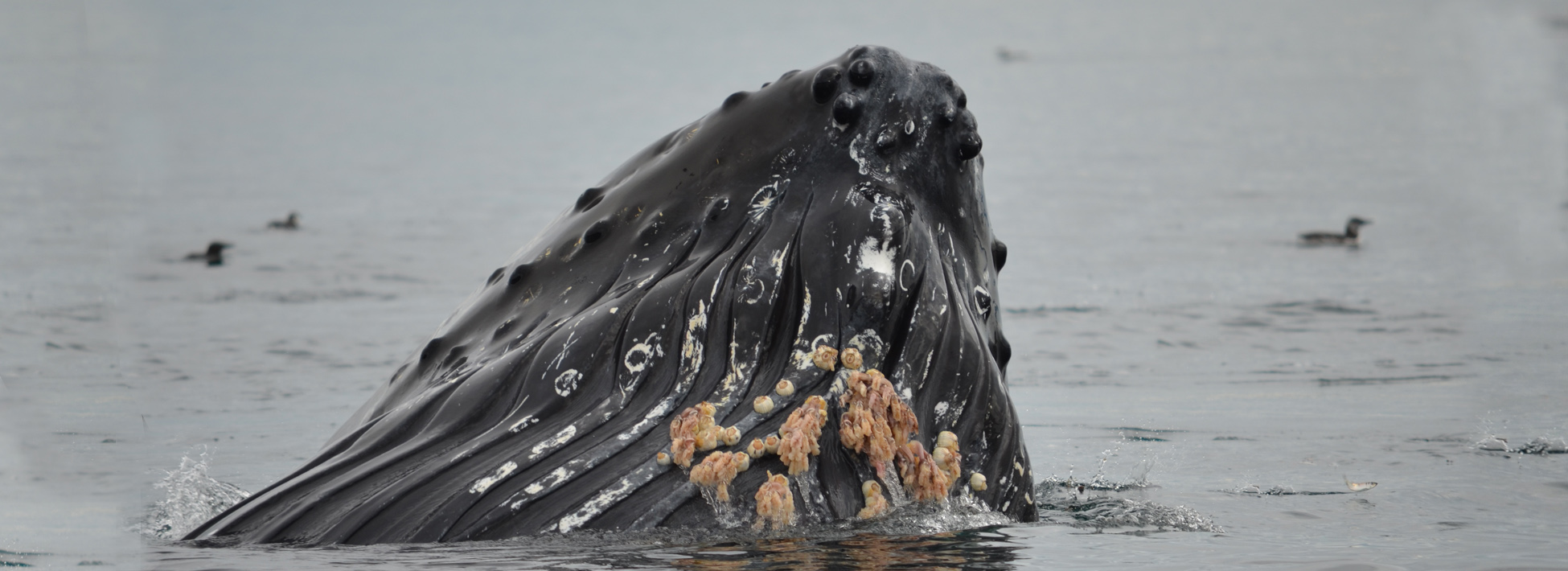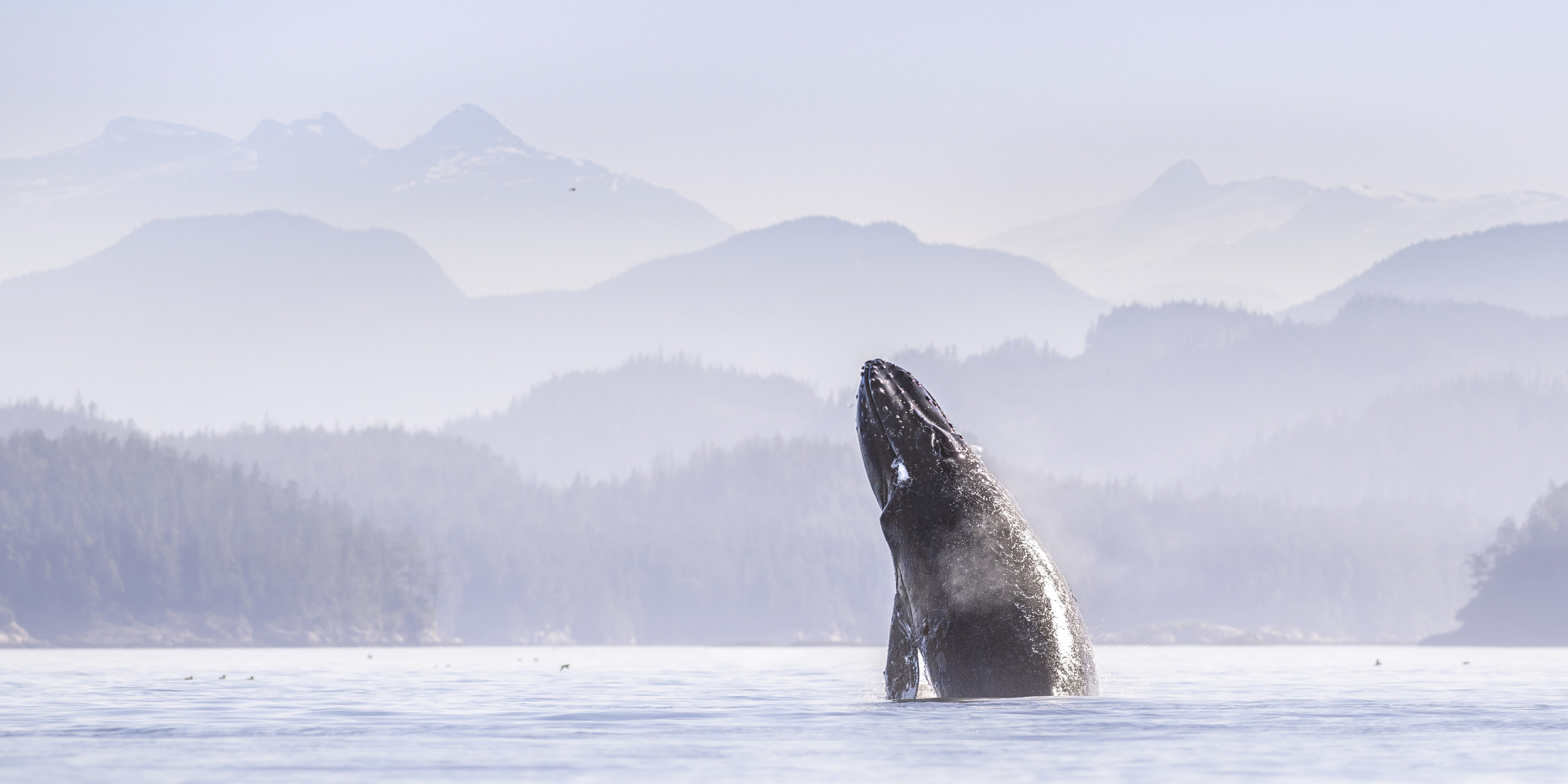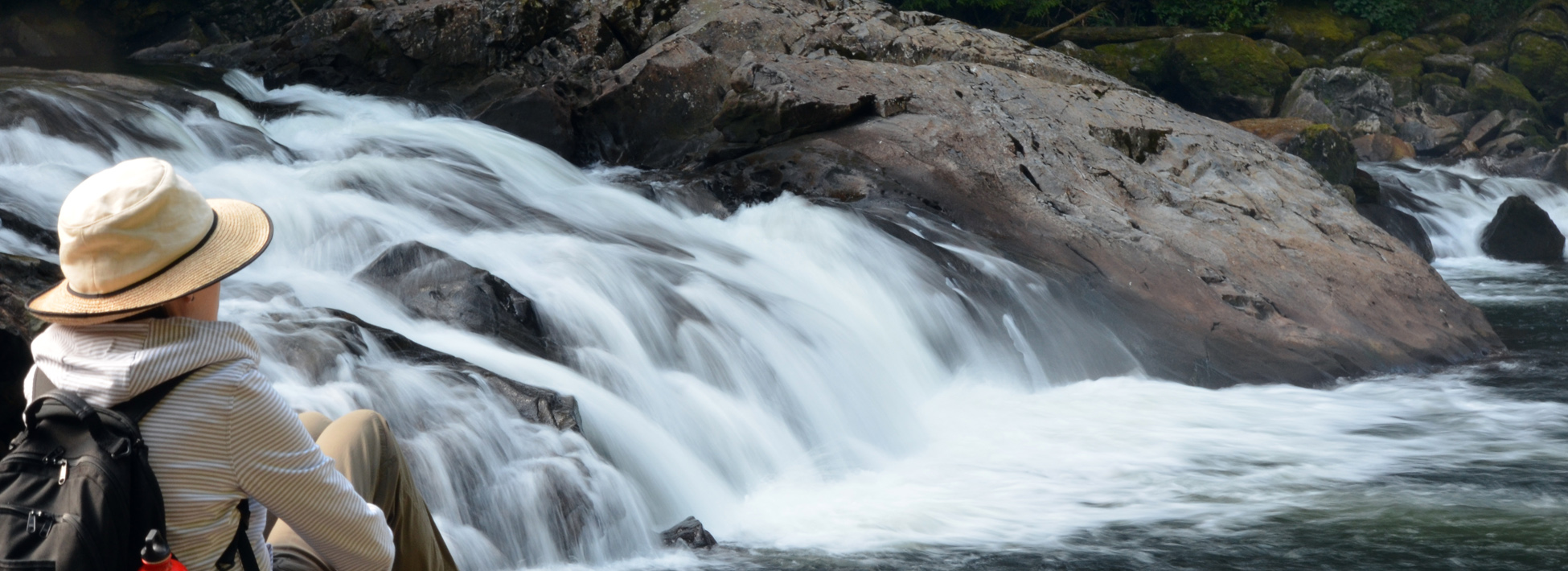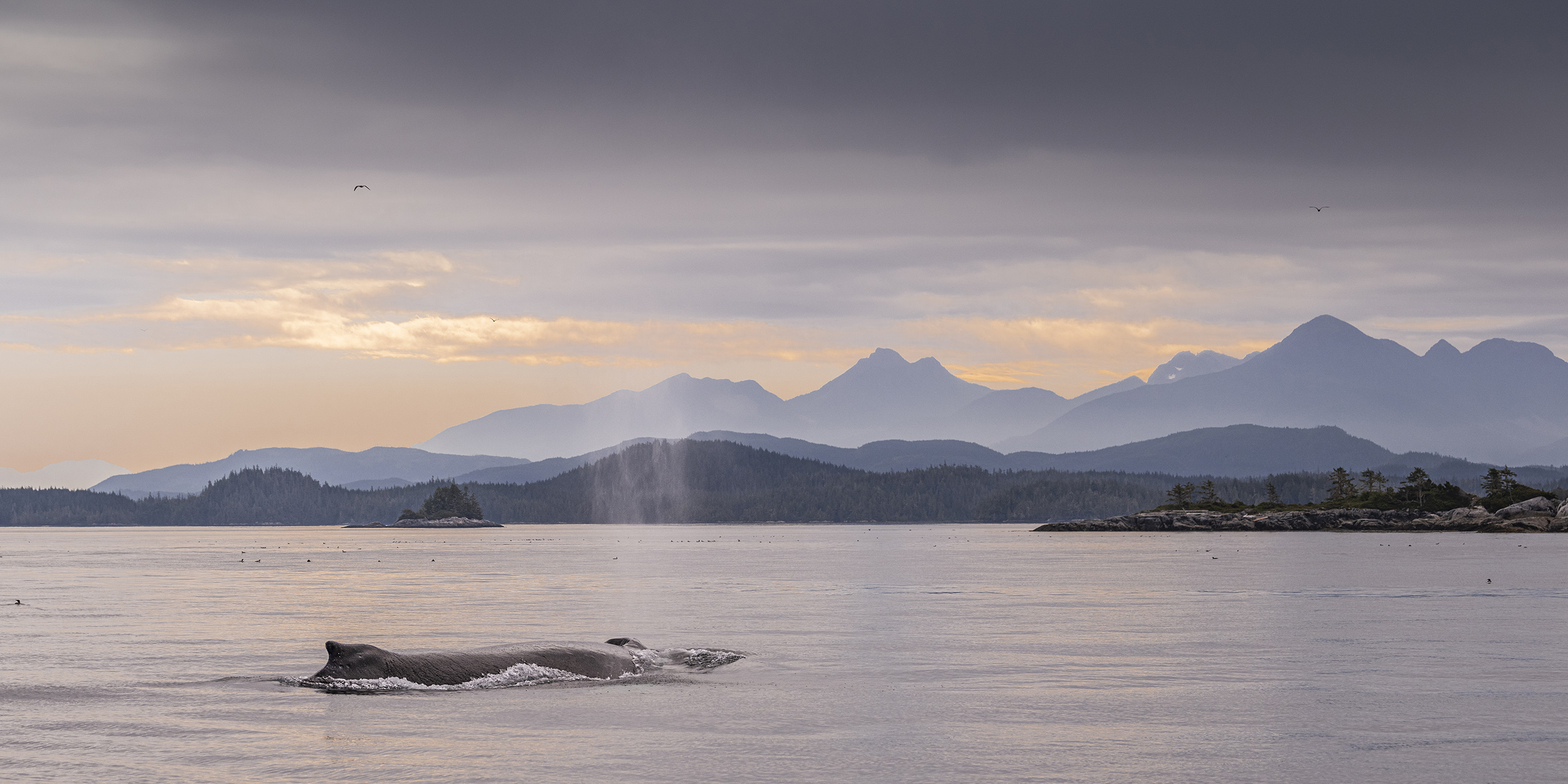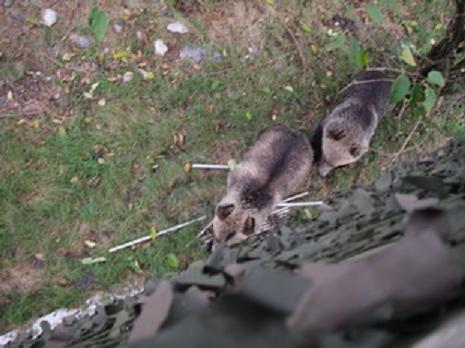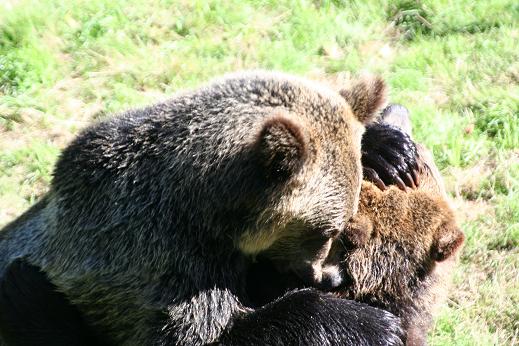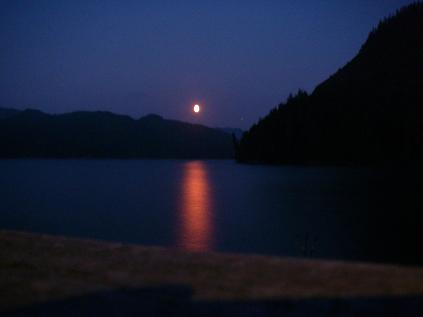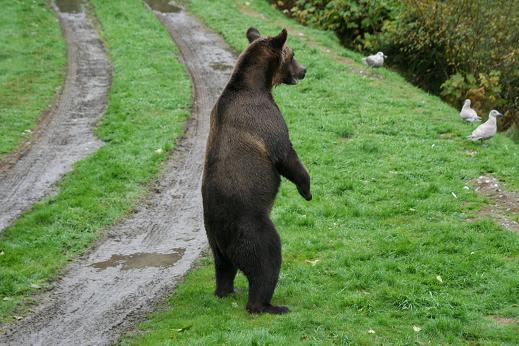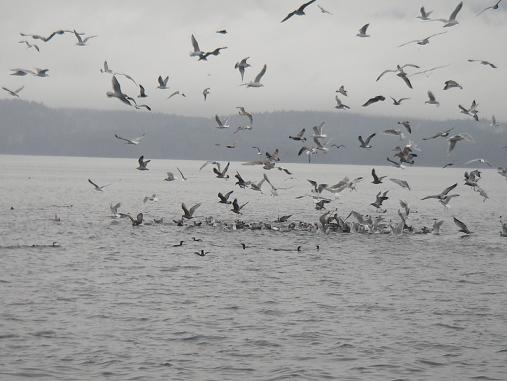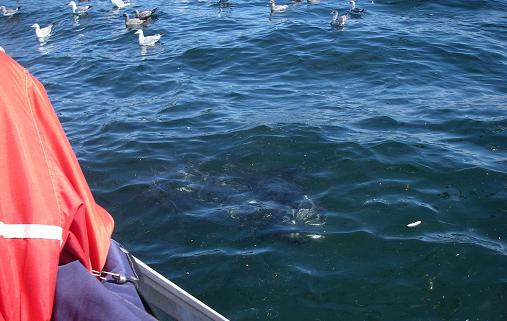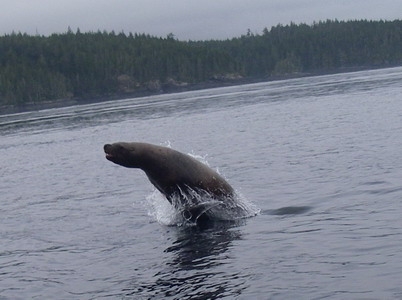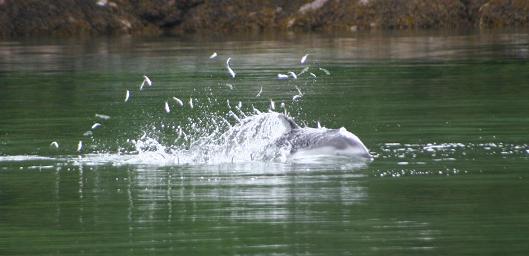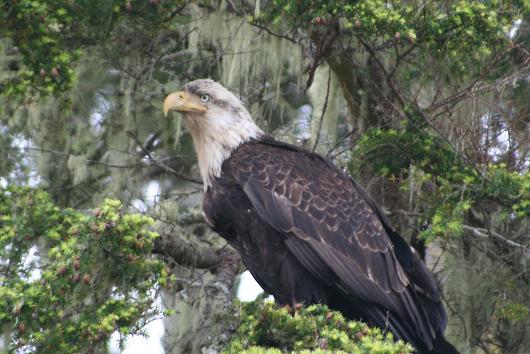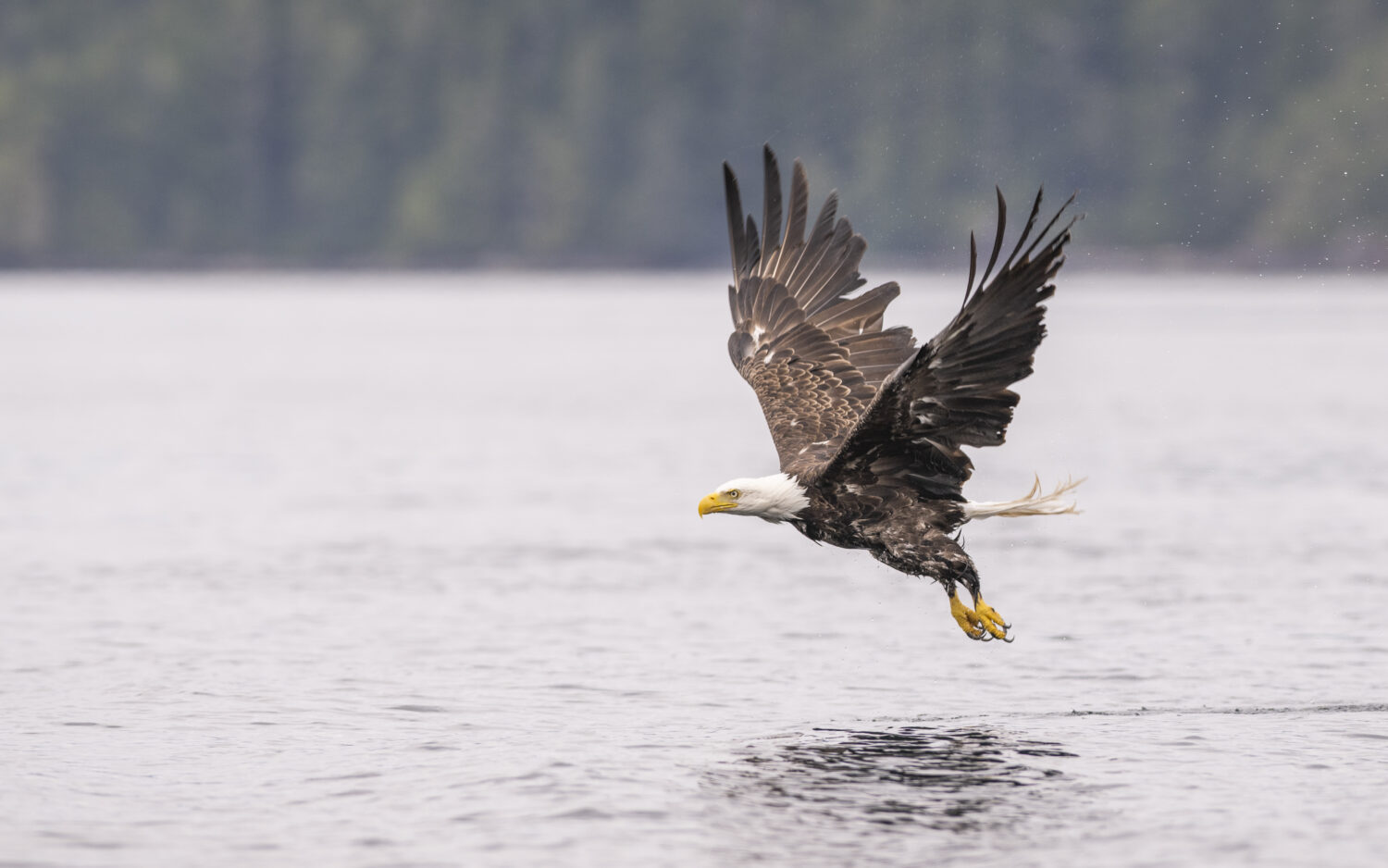The viewing stands the Lodge uses after August 24th are in a good location on Knight Inlet’s Glendale River. There is water on three sides full of pink salmon and the grizzlies come to feed. As this photo shows they do pass directly beneath the stands as they move from one fishing spot to another. These two grizzlies do not appear very large because they are two-year-old cubs while one adult would be the size of the two cubs combined.

